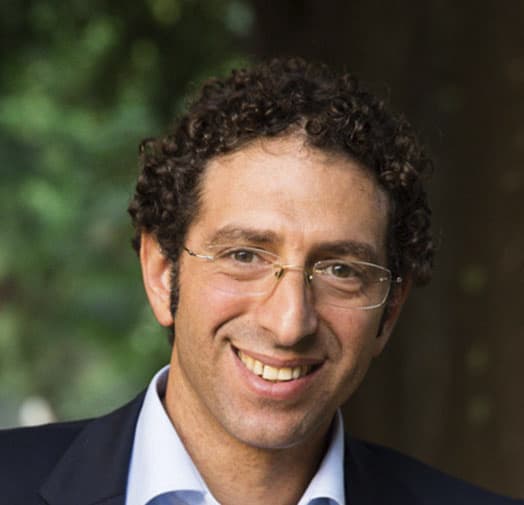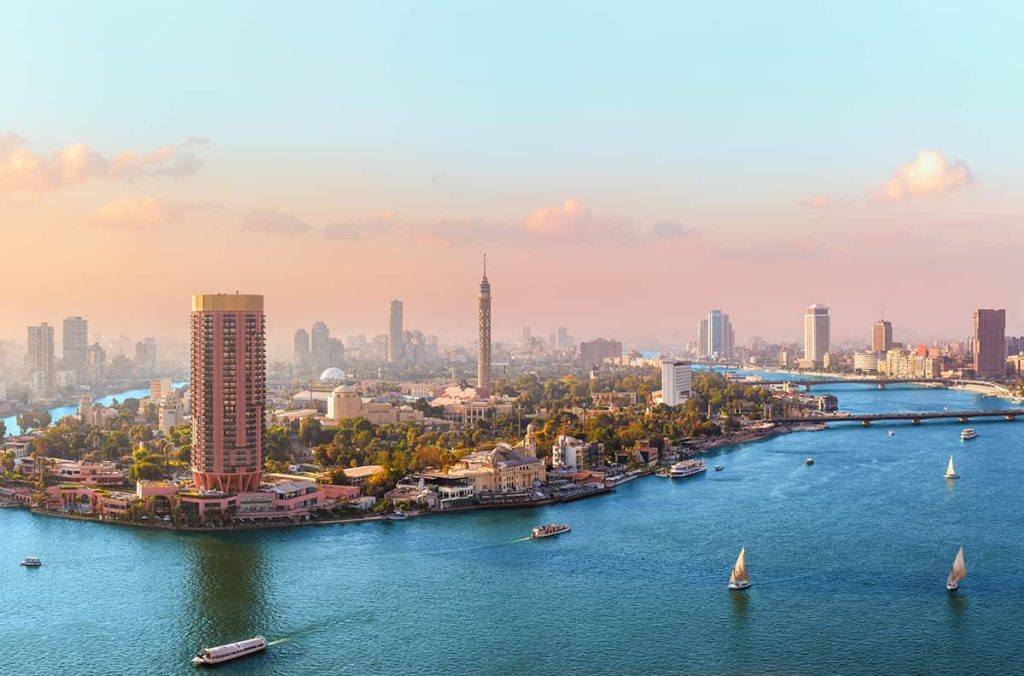Can Egypt and Morocco continue to drive economic growth in the region?
North Africa is the fastest growing region in the Arab world and Africa. In 2023, the combined gross domestic product of Mauritania, Morocco, Algeria, Tunisia, Egypt and Libya increased by 4.2%, compared with only 1.6% in the Middle East and 3.2% in Africa. The International Monetary Fund (IMF) forecasts North African economies will outperform their peers again this year with growth of 4%, but the figures mask important regional differences.
Egypt, with a GDP of about $400 billion, is the largest player. Cairo maintained growth of 4.2% in 2023 and should remain above 3% this year – “remarkably robust growth,” noted Mathias Cormann, secretary-general of the Organization for Economic Co-operation and Development (OECD), at the launch of the February report. survey about Egypt.
But Cairo is also facing a decade-long financial crisis. External debt has quadrupled over the past ten years, and 60% of the country’s budget is spent on servicing this debt. The Egyptian pound is one of the most dynamic currencies in the world. Inflation hit a record high of nearly 40% last summer, and a third of Egyptians struggle with poverty.
Over the past few years, several international investors and local entrepreneurs have exited the market. But as many observers say, the Arab world’s most populous country may be “too big to fail,” especially as war rages in the neighboring Gaza Strip.
“Given its increased geostrategic role in the Middle East, Egypt is expected to continue to receive international support in overcoming exogenous external shocks, such as the decline in trade in the Suez Canal due to the Red Sea conflict,” says Reza Bakir. Managing Director and Global Practice Leader of Sovereign Advisory Services at management consultancy Alvarez & Marsal.
In March, the EU announced an $8.1 aid package (a combination of concessional loans and investments), and the IMF increased its package of loans to Egypt from $3 billion to $8 billion, providing liquidity that should help ease financial pressure – at least , for a while. . Weeks earlier, Cairo signed a $35 billion deal with Emirates sovereign wealth fund ADQ to develop Ras al-Hekma, a small peninsula in the Mediterranean that could attract up to $150 billion in investment.
Recent announcements give hope to the business community. “This changes everything,” says Mounir Nakhla, CEO and founder of MNT-Halan, Egypt’s first fintech unicorn, which raised $400 million in February 2023. “A lot of investors who were negotiating with us and were slow suddenly became much more optimistic about Egypt again. »
The OECD’s Corman outlined several recommendations to help Egypt realize “its enormous potential”, including reducing administrative barriers to new business, reducing the influence of state-owned enterprises and lowering trade tariffs.
“We’re at a stage where some are still skeptical. The numbers suggest we are coming out of a big problem, but company and asset valuations have not yet adjusted. This is a great time to invest in Egypt,” adds Nakhla.
Maghreb
On the opposite side of the continent, Morocco is North Africa’s second economic heavyweight. Decades of financial and structural reforms have transformed the kingdom into a center for foreign investment, attracting global companies to set up factories and regional headquarters for operations in Africa and the Middle East. Despite challenges posed by the war in Ukraine and natural disasters at home, growth is expected to remain at 3% this year.
“Morocco appears to be in a relatively good position, given strong tourism revenues and a recovery in domestic demand, coupled with lower inflation and an expected decline in domestic rates,” says Baqir of Alvarez & Marsal.
Some observers believed that Tunisia could play the same role as Morocco did several years ago, but the country is now in a deep financial crisis. The accumulated public debt is equivalent to 80% of GDP, and Tunisia relies heavily on loans from local banks to service this debt, limiting its ability to finance the economy. International rating agencies have downgraded Tunisia several times, making it difficult to obtain loans. And local authorities continue to reject offers of IMF loans.
“We fear an imminent default on foreign debt,” says Nader Haddad, CEO of asset management company Finadhad. He predicts a further devaluation of the Tunisian dinar and an increase in poverty levels.
Tunisia will likely need outside help to see the light at the end of the tunnel, but structural reforms will also be needed to improve its attractiveness.
“Tunisia does not welcome investors. Local administration is heavy, it is not digitized, and bureaucracy is killing the economy,” says Haddad, emphasizing that with the right business environment, the country can provide significant opportunities in areas such as industry, agriculture, and research and development.
Other countries on the northern coast of Africa tell a different story. Libya, Algeria and, to a certain extent, Mauritania are largely rental economies. So while they boast impressive growth rates, such as Libya’s 12.5% in 2023 and an expected 7.5% this year, these figures largely reflect oil and gas prices – or, in the case of Mauritania, prices for gold.
Banking, fintech and financial inclusion
How do banks and financial institutions operate in this fragmented region? Over the past decade, most Western lenders, including Barclays, Scotiabank, BNP Paribas and Societe Generale, have gradually pulled out of North Africa, leaving local banks, mainly Moroccan and Egyptian lenders, to scale across countries and establish themselves as market leaders. The National Bank of Egypt, Banque Misr and Attijariwafa are now among the 30 largest banks in the Middle East and Africa (MENA) region by assets, according to the latest S&P Global ranking.

What these banks have in common at home and abroad is that they know how to reach large sections of the unbanked population to attract new customers. In Morocco, for example, the World Bank’s Global Findex study shows that in 2021, 44% of adults had access to a bank account and 30% used digital payments, up from 29% and 17% respectively in 2017.
Most banks have developed their technology to accelerate financial inclusion or have partnered with fintech companies to offer simple digital solutions for everyday transactions.
In Egypt, MNT-Halan serves more than seven million customers through services such as microfinance, salary advances, bill payments and digital wallets. The monthly transaction volume is approximately US$100 million and the loan portfolio is US$550 million.
“We work closely with almost all banks in Egypt. They supply us with money, and we distribute it. Although there is some overlap, the synergy is much stronger. We mainly serve segments that they do not cover or underserve, resulting in very strong partnerships,” explains MNT-Halan’s Nakhla.
Despite the severe crisis in Cairo, MNT-Halan “performed much better than expected,” Nakhla continues, pointing out that the firm’s loan book grew by $20 million to $30 million month-on-month in 2023. “We as a company are very protected. Our main source of income is the profitability of our loan portfolio. In conditions of very high inflation due to devaluation of the local currency, the average loan size automatically increases, as does the loan portfolio in US dollars.”
Targeting the unbanked is a winning strategy in times of crisis, when some of the poorest people lose their bank accounts, as in Tunisia, but also in more developed countries such as the Gulf states. where the majority of the population consists of migrant workers who must send remittances.
In October, Moroccan company Cashplus raised $60 million (the fourth-largest fintech round in the MENA region in 2023) to continue transforming the company into a regional super app, or one-stop shop for financial services through remittances.
“In many emerging markets and even some of the most developed countries, financial inclusion is still underdeveloped and not fully realized,” says Nakhla, who plans to launch MNT-Halan in four new markets this year.
Climate finance
Another sector that is on every North African financier’s radar is climate finance. In the past year alone, Morocco has been hit by drought and an earthquake, Libya has lost thousands of people in deadly floods and a dam failure in Derna, and Algeria has been plagued by wildfires.
Climate change “impacts economic growth, employment and inflation – the main variables on which monetary policy decisions are based. In addition, climate-related risks will inevitably impact the banking and insurance industries, as well as financial stability in general,” warned Moroccan Central Bank Governor Abdelatif Djouari during a recent conference in Rabat.
“The annual investment required to implement the regional climate action plan under the National Defined Contribution (NDC) is estimated at US$25.7 billion until 2030. % of estimated annual requirement,” the African Development Bank Group said in its 2023 forecast.
Foreign donors currently account for 80% of climate finance, and the local public sector 18%. This leaves room for attracting private investment. Among the most attractive segments, new methods of harvesting solar and wind energy have proven to be the most attractive. Agriculture, which includes ensuring food security in the face of rising temperatures, managing water resources and reducing import costs, also represents important growth opportunities as the sector remains huge in terms of employment and share of GDP across all North African countries .
As an important part of the MENA region, North Africa has great potential due to its young population, natural resources and strategic location, but it needs to work on its attractiveness. To convince foreign investors to step in, the region needs reforms to make it easier to do business.


